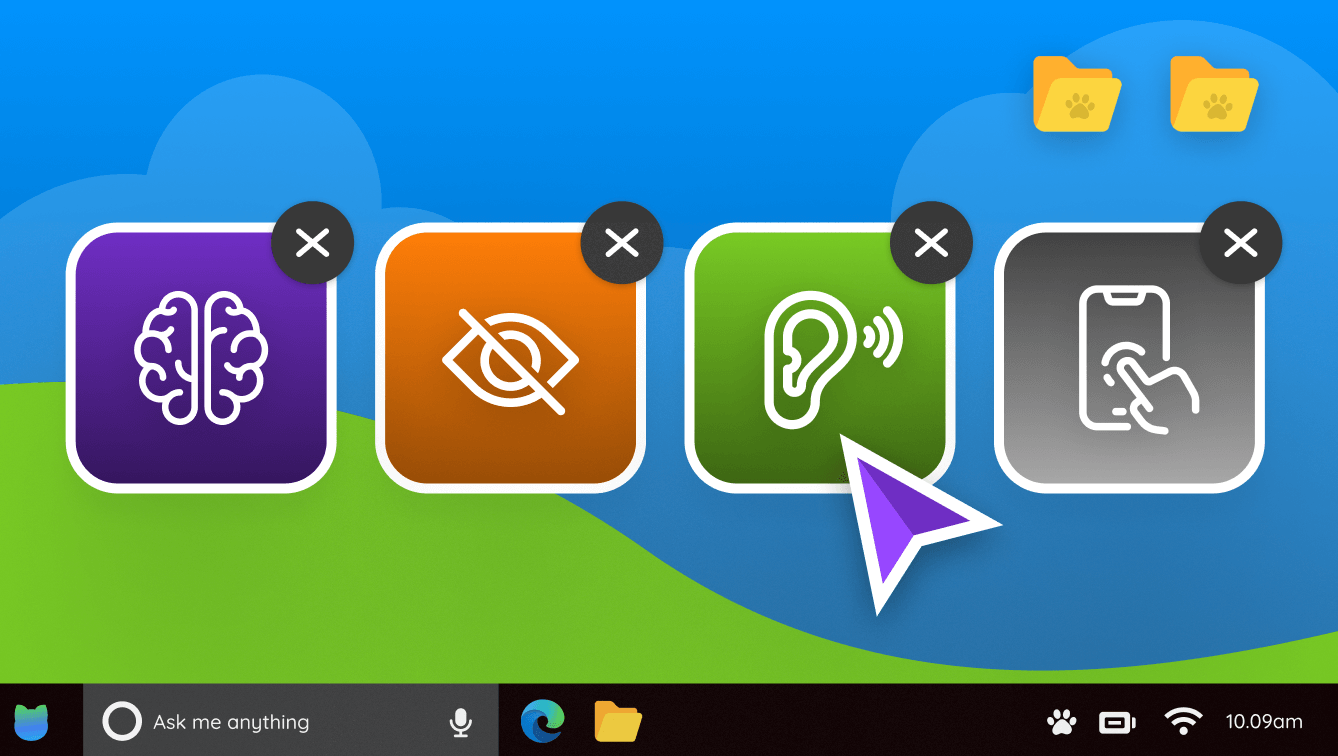Understanding these categories of disabilities can significantly improve the design and development of accessible web content, ensuring a more inclusive digital world.
No guide to this subject can be complete, but here is a summary of major types of disabilities and their impact on web accessibility.
Visual disabilities
Visual disabilities include a wide spectrum of conditions, ranging from mild vision impairments to total blindness. They can greatly impact a person’s interaction with web content. For example, individuals with color blindness might struggle to interpret information that relies solely on color distinctions. Users with low vision may need to enlarge text or images or adjust contrast settings to experience it.
People with severe visual impairments or blindness often use screen reader software to interact with digital content. This assistive technology reads out content and provides audio cues for elements like links and buttons. Therefore, web designers and developers need to ensure that all content is compatible with these tools, including alternative text for images and correct use of headings, lists, and table markups.
Hearing disabilities
Hearing disabilities can range from mild hearing loss to profound deafness. For web accessibility considerations primarily focus on content that contains audio. Videos or audio clips should be equipped with captions or transcripts so that users can access the information visually.
In a broader sense, designers should be mindful not to rely solely on audio cues for navigation or notifications, ensuring the availability of visual or tactile alternatives.
Motor disabilities
Motor disabilities involve conditions that affect physical control and mobility. They can range from conditions causing slight hand tremors to those leading to the complete inability to use hands or arms. This category also includes conditions that limit fine motor control, causing difficulty with tasks such as clicking small buttons or links.
Web accessibility accommodations for motor disabilities may involve ensuring compatibility with alternative input devices such as specialized keyboards, eye-tracking systems, and single-switch devices. Key design considerations include providing ample clickable areas, implementing keyboard-friendly navigation, and minimizing the need for complex gestures or movements.
Cognitive disabilities
Cognitive disabilities encompass a wide range of conditions that affect cognitive functions like memory, attention, problem-solving, and understanding language. Examples include learning disabilities such as dyslexia, attention deficit disorder (ADD), and intellectual disabilities.
Web accessibility for cognitive disabilities can involve complex and multifaceted approaches. Simplifying content, using clear language, providing consistent navigation, and avoiding time-limited tasks can improve accessibility for these users. Additionally, the ability to customize the display, such as changing font sizes or colors, can also be beneficial.
Neurological disorders
Neurological disorders are conditions that originate from the nervous system and can affect a person’s motor skills, balance, coordination, or sensory perception. These include conditions like Parkinson’s disease, multiple sclerosis (MS), and epilepsy.
Web design that caters to individuals with neurological disorders may involve ensuring compatibility with alternative input devices and providing keyboard navigation options. For those with sensory sensitivities, such as individuals with epilepsy, it’s critical to avoid elements that can trigger seizures, like flashing or flickering content.
